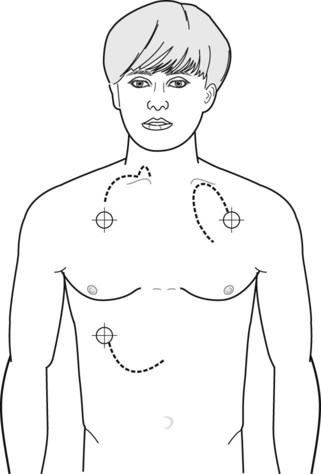This section may be photocopied and distributed to families. The implanted port is used much like a regular intravenous (IV) line. The port is usually placed by the surgeon on the chest (Figure 1); the port is implanted under the skin so there is less restriction on the child’s activities, and dressing changes are not required once the incision heals. To access the port, a special needle is inserted through the skin into the rubberlike top of the port (Figure 2). Insertion of the needle is usually not painful, but if it is uncomfortable for your child, the area may be numbed first with a topical anesthetic such as EMLA or LMX4. Because the anesthetic takes awhile to work, it is best to plan ahead; the anesthetic may need to be placed over the site before leaving home if a scheduled visit to the health care center is planned. The needles are made straight or bent; the bent shape permits delivery of fluids or medications over a period of time. Your child may even receive medicine at home via an ambulatory infusion pump. Blood samples can also be drawn from the port. When the treatment is completed, the needle can be removed. If the child is undergoing a treatment that goes for several days, the same needle can stay in for up to a week before it needs to be changed.
Wilson & Hockenberry: Wong’s Clinical Manual of Pediatric Nursing, 8th Edition
Patient Teaching Guide
Care for the Implanted Infusion Port
Use of the Implanted Infusion Port
![]()
Stay updated, free articles. Join our Telegram channel

Full access? Get Clinical Tree


Nurse Key
Fastest Nurse Insight Engine
Get Clinical Tree app for offline access

